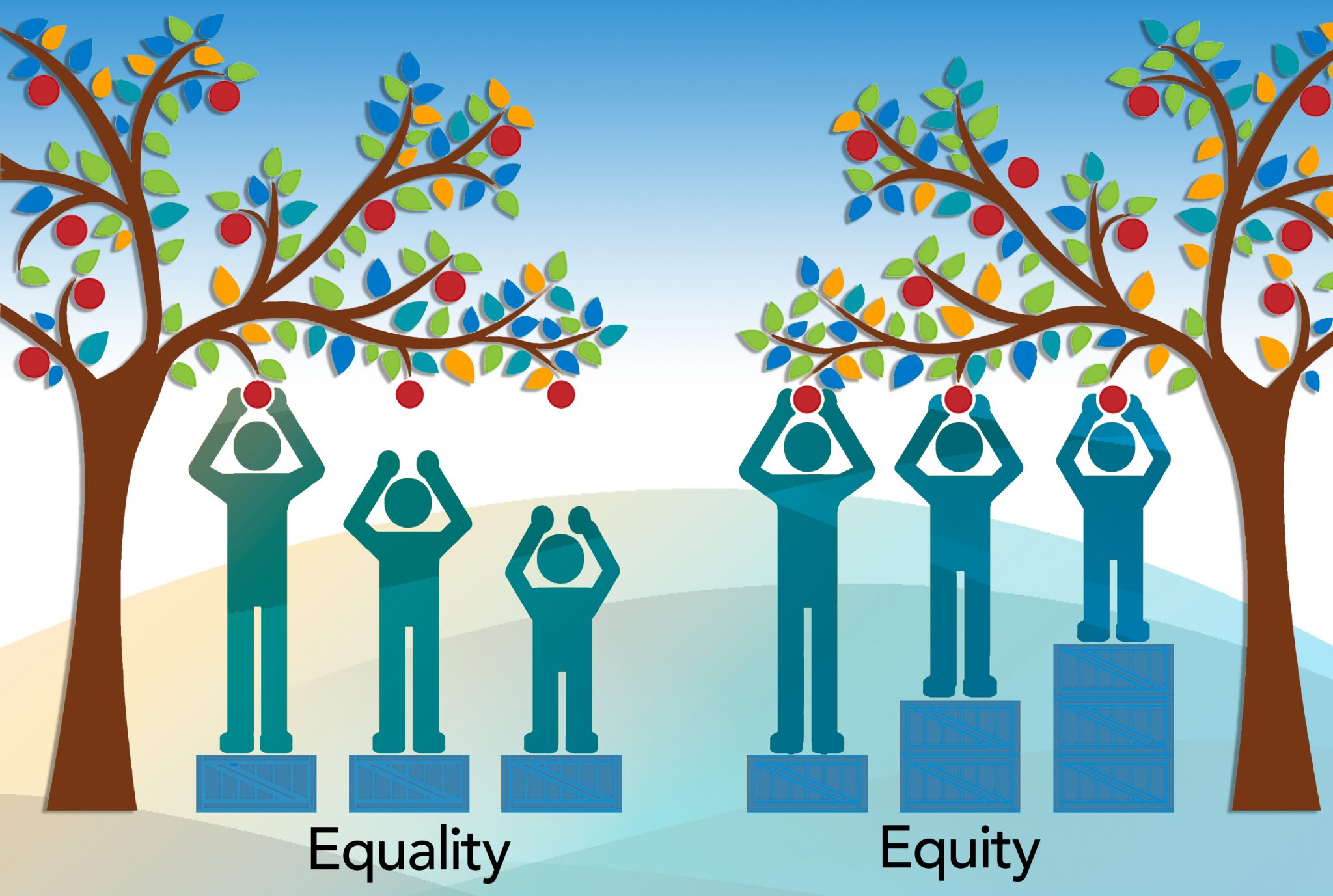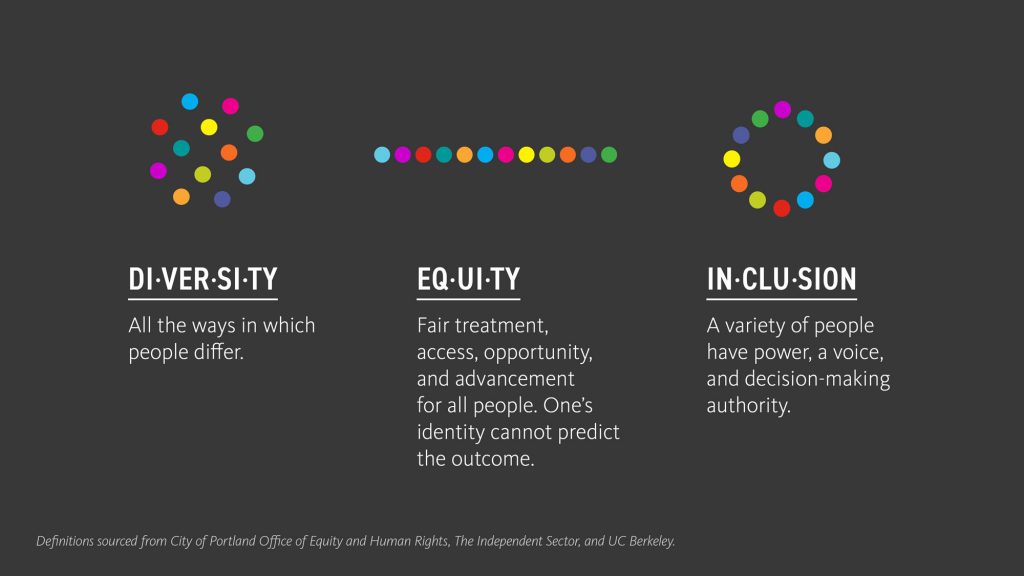Equity, diversity, and inclusion (EDI) are three interrelated concepts. When you think of these three words, what comes to mind for you? What do you notice? Do you notice differences, similarities, or relationships between these three words? Let’s first look at some formal definitions with examples and guiding questions for each of these terms.
Equity
We should first start with what equality is and what equity is, as the two concepts are generally confused with one another.
- Equality generally means treating people the same way, to give everyone equal access to opportunities and benefits in society.
- Equity includes treating some people differently, to take into consideration some people’s particular needs and situations
For example, in the picture below, three people of different heights are trying to reach an apple on a tree. On the left, equality shows everyone is given the same height box to stand on, so only the tallest person could get the apple. On the right, equity shows each person is provided with different numbers of boxes that help all of them get the apple.

Equity is a process that ensures everyone has access to the same opportunities. Equity appreciates that privileges and barriers exist and that, as a result, we all don’t start from the same place. Rather, each of us comes from a different background. Equity is an approach that starts with acknowledging this unequal starting place and makes efforts to address and change this imbalance (Bolger, 2020).
Diversity
Now, take a minute to think about the diversity of your own team or organisation. How would your experience change if you were of a different gender, sexual orientation, race, religion, or ability?
Diversity is the presence, in an organisation or a community, of a wide range of people with different backgrounds, abilities and attributes including ethnicity, race, colour, religion, age, gender and sexual orientation.
OER creators or publishers may ask these questions if they are interested in promoting diversity:
- How can our we ensure our open textbooks reflect the diversity of society?
- How can we include diverse contributors in OER creation?
Inclusion
Inclusion refers to taking into account differences among individuals and groups when designing something (e.g., policy, program, curriculum, building, shared space) to avoid creating barriers. Inclusion is about people with different identities feeling or being valued and welcomed within a given setting.
If one is focused on inclusivity, an organisation may ask:
- What is the lived experience for those who are marginalised within the organisation?
- Are there barriers in the way of marginalised individuals feeling a sense of acceptance and belonging?
- Are there actions or attitudes, direct or indirect, that we are doing as an organisation that is impacting more diverse teams (Bolger, 2020)?
What Equity, Diversity, and Inclusion Really Means

When examining these concepts together, there are overlaps and contrasts here, and it can be difficult at first to disentangle these definitions:
- Equity is not an outcome. Equity refers to the process an organisation consistently engages in to ensure that people with marginalised identities have the opportunity to grow, contribute, and develop— regardless of their identity.
- Diversity is an outcome: “Wow, this company is really diverse!”
- Inclusion is also an outcome: “We do frequent internal temperature checks, and as far as we know, we have an inclusive and welcoming place for women and people of colour here” (Bolger, 2020).
Accessibility
A key part of equity is accessibility. Accessibility is the practice of making information, activities, and/or environments sensible, meaningful, and usable for as many people as possible (SeeWriteHear, 2020). As an overview:
- Accessibility is about equity
- Accessibility is about cultural practice
- Accessibility is about people
- Accessibility is about compliance
- Accessibility is about usability
- Accessibility is about context (SeeWriteHear, 2022).
Read more about these sub-themes of accessibility in the article ‘What is accessibility?’
Putting this all together, in the higher education setting, successful EDI means being intentional about EDI right at the beginning of curriculum design, through development and into delivery.
The framework on the next page will assist you in remembering to think about EDI in OER creation.
Copyright note: This section has been adapted in part from:
- ‘What is EDI?’ in Universal Design for Learning (UDL) for Inclusion, Diversity, Equity, and Accessibility (IDEA) by Darla Benton Kearney, licensed under a CC BY 4.0 licence.

